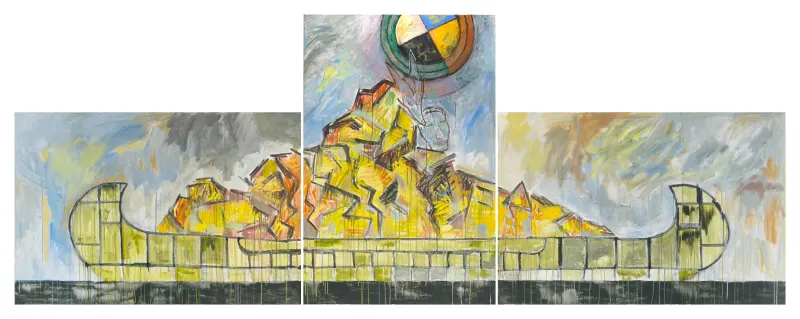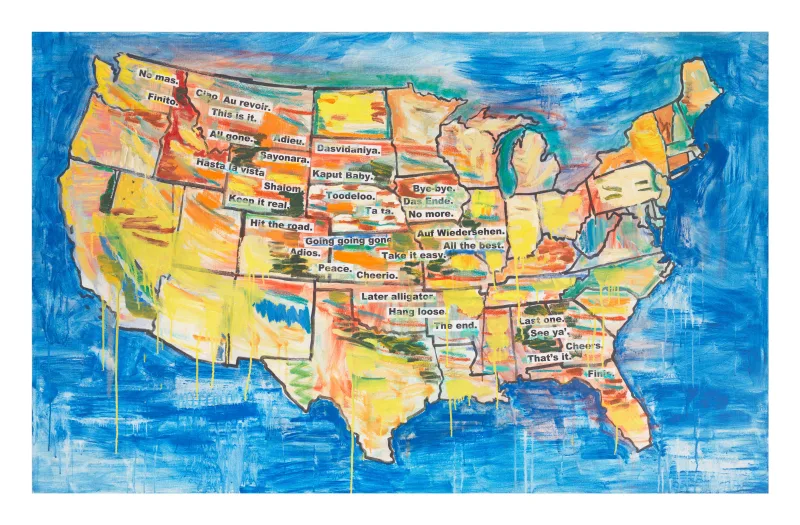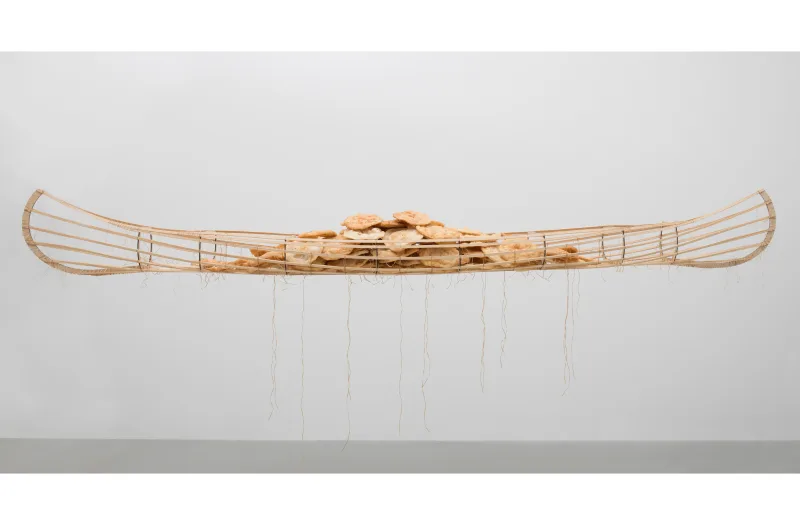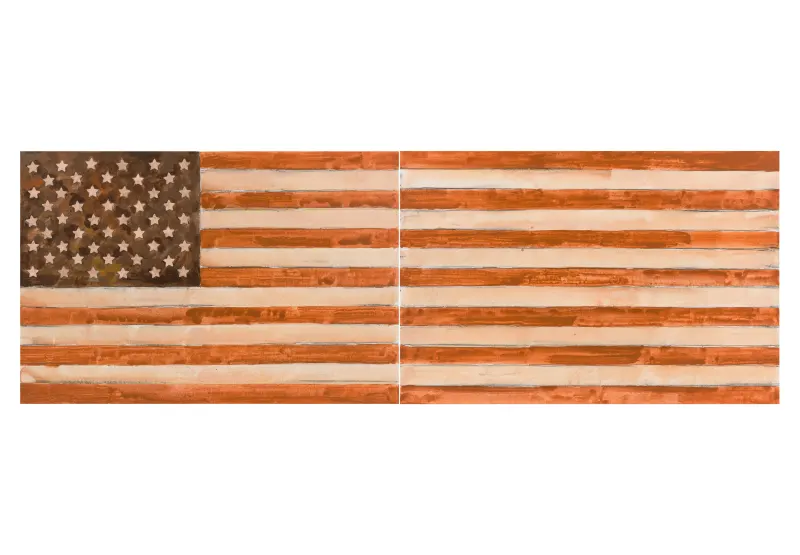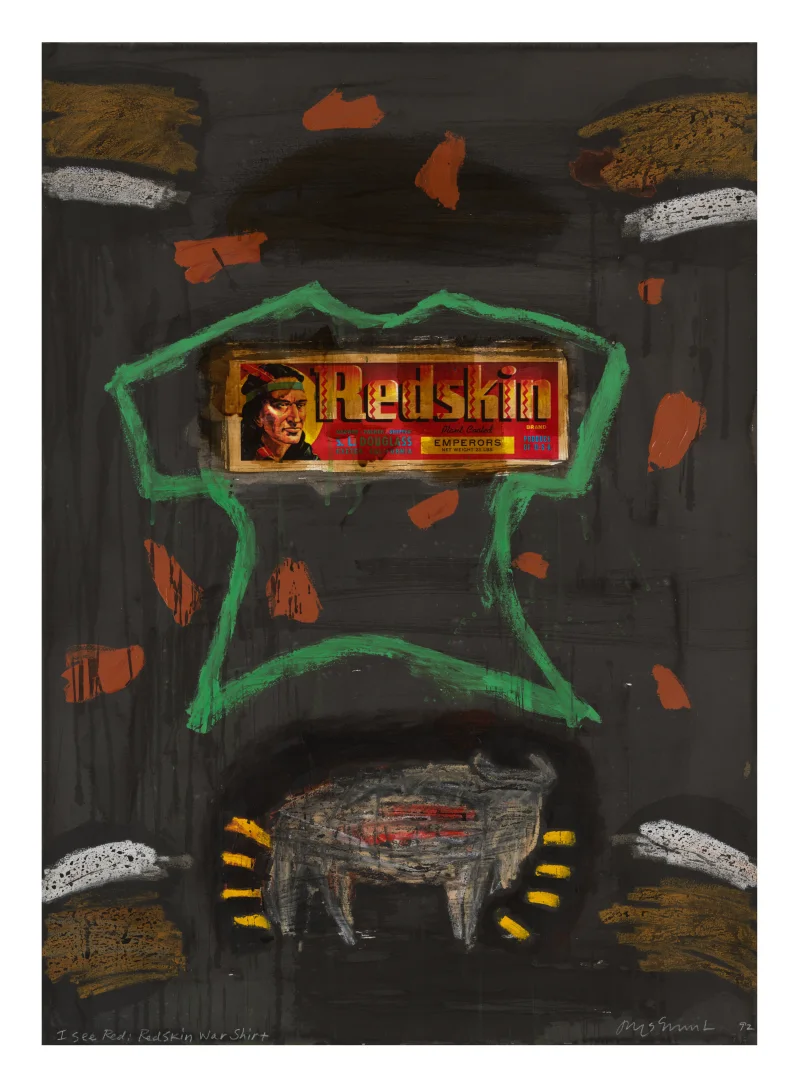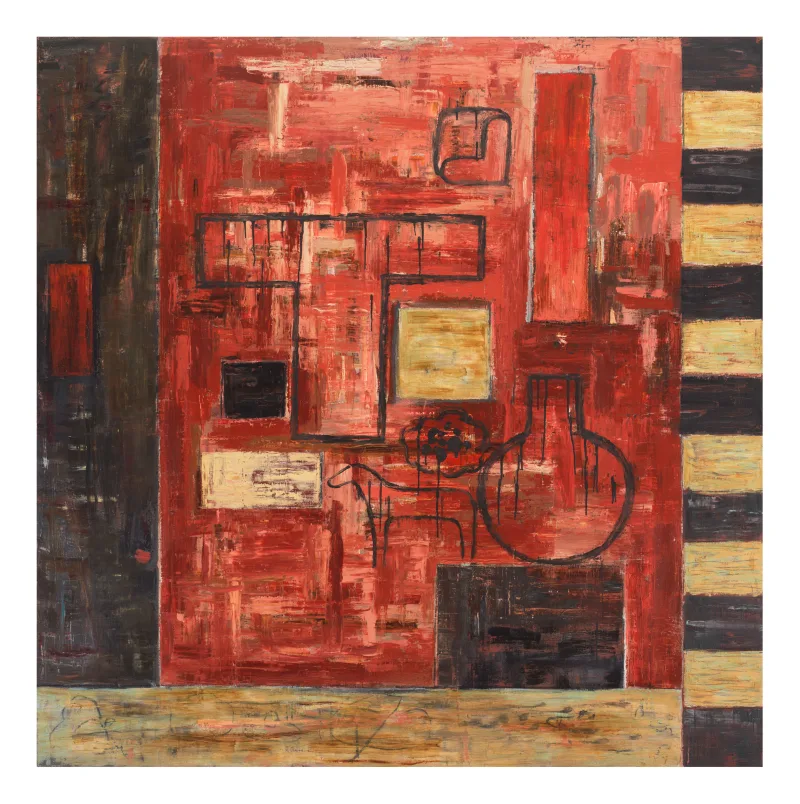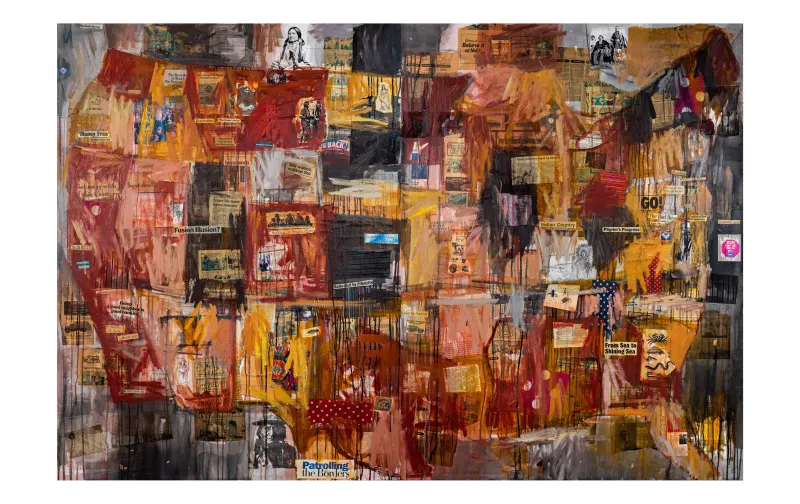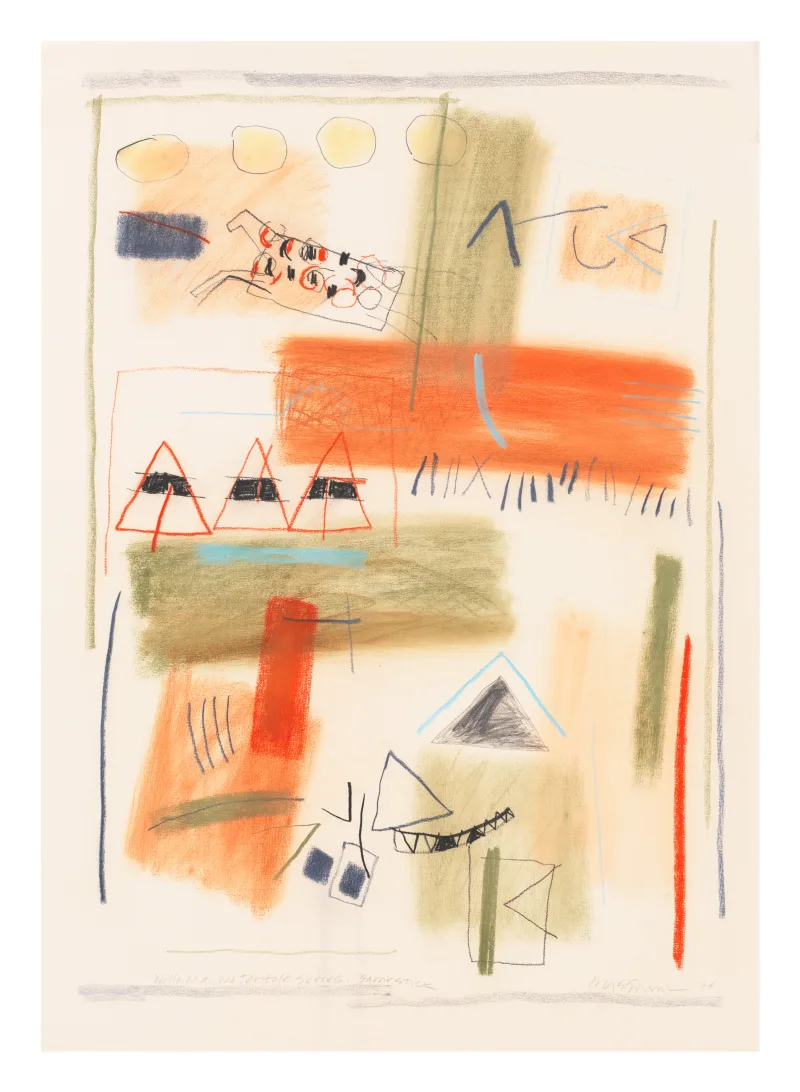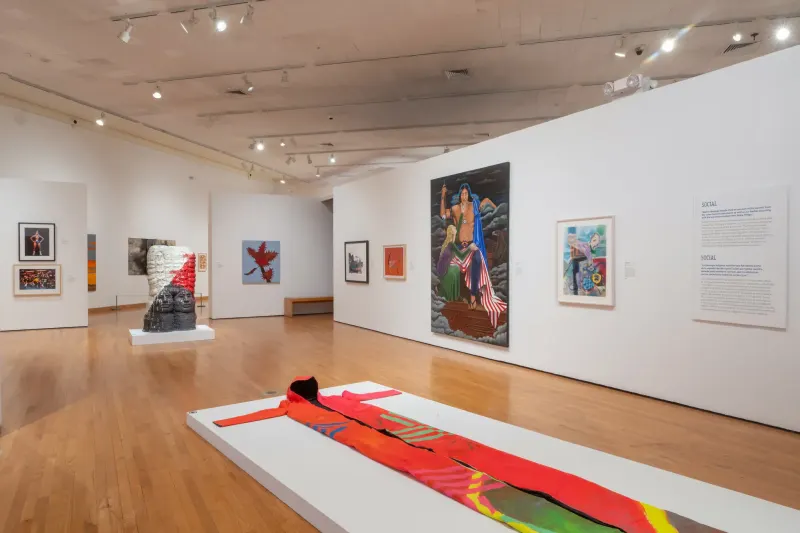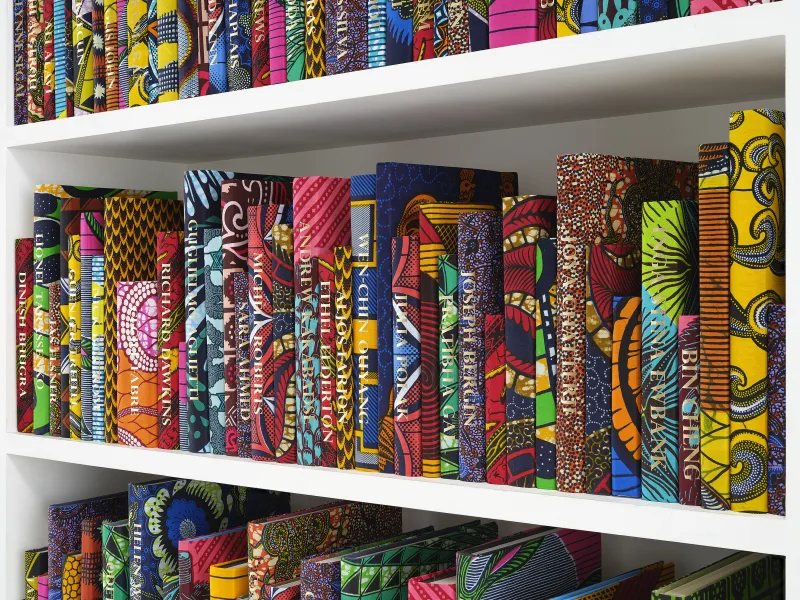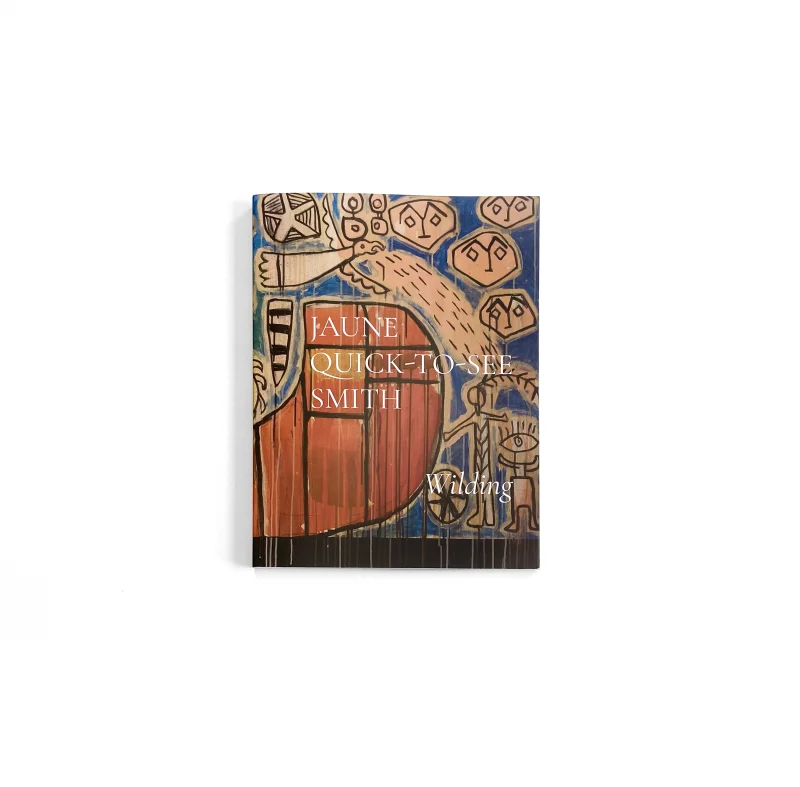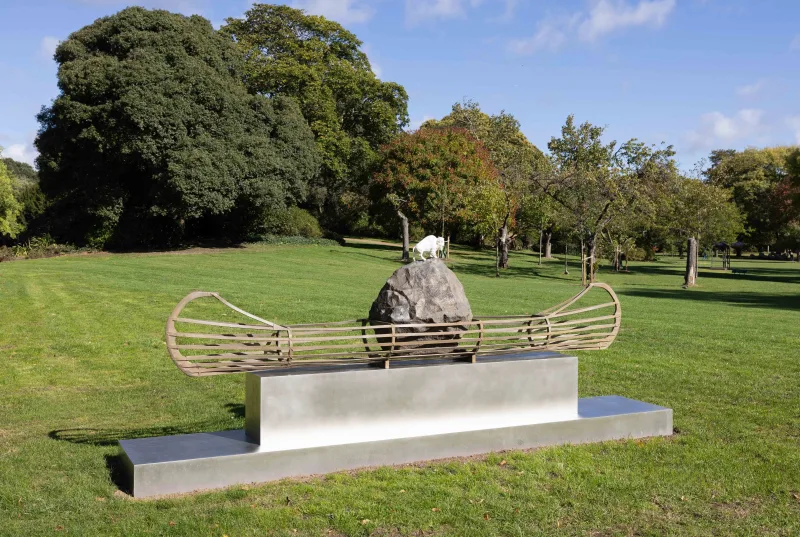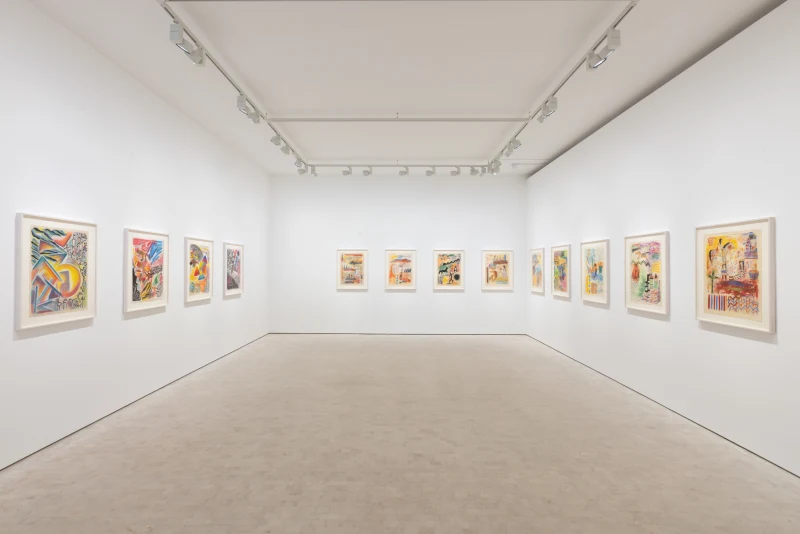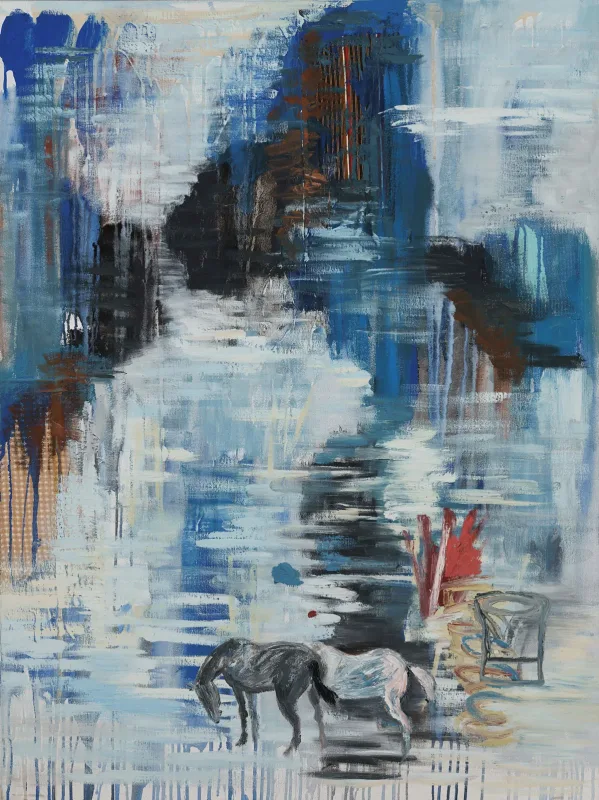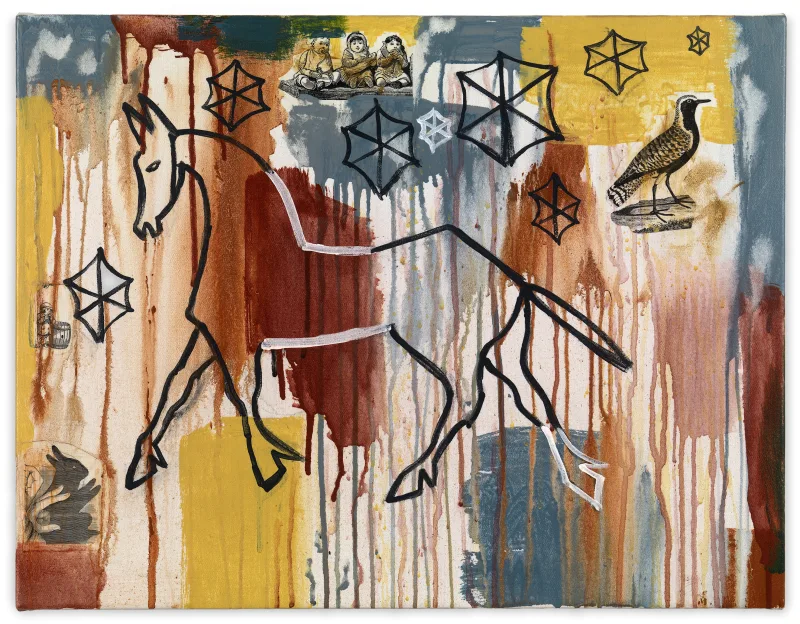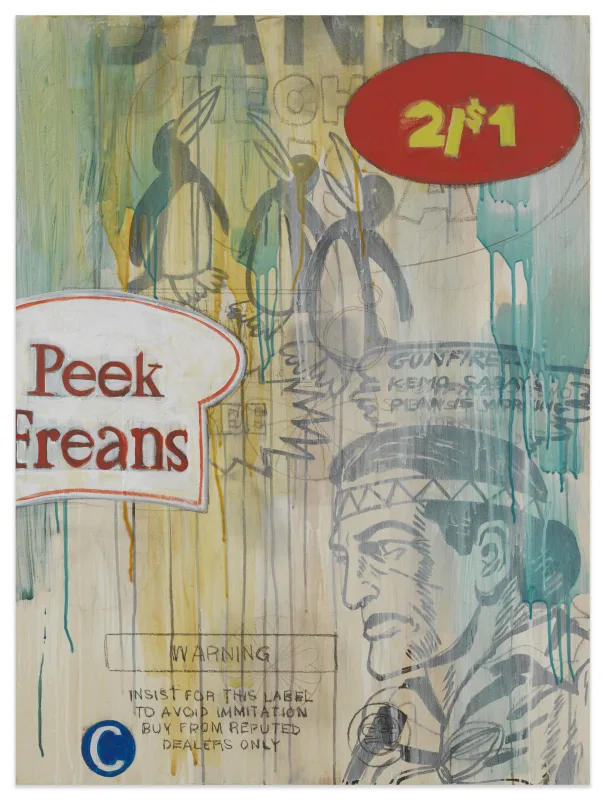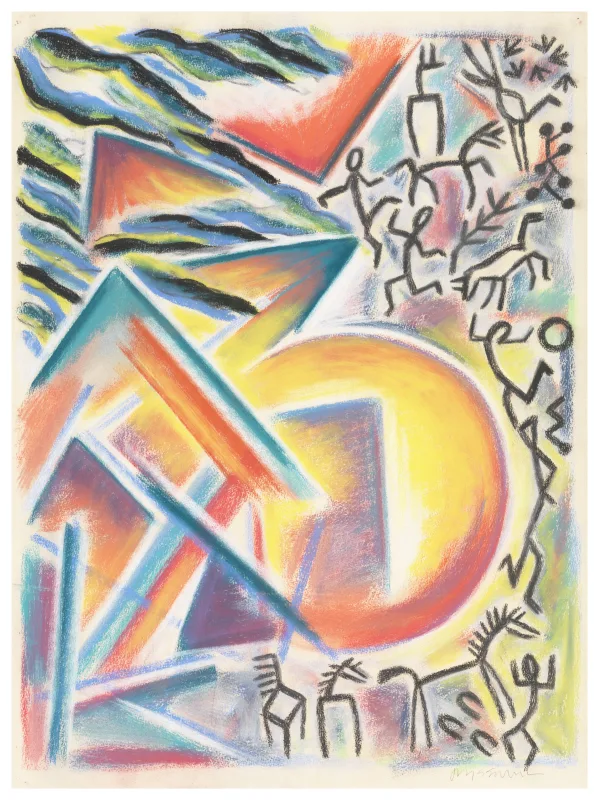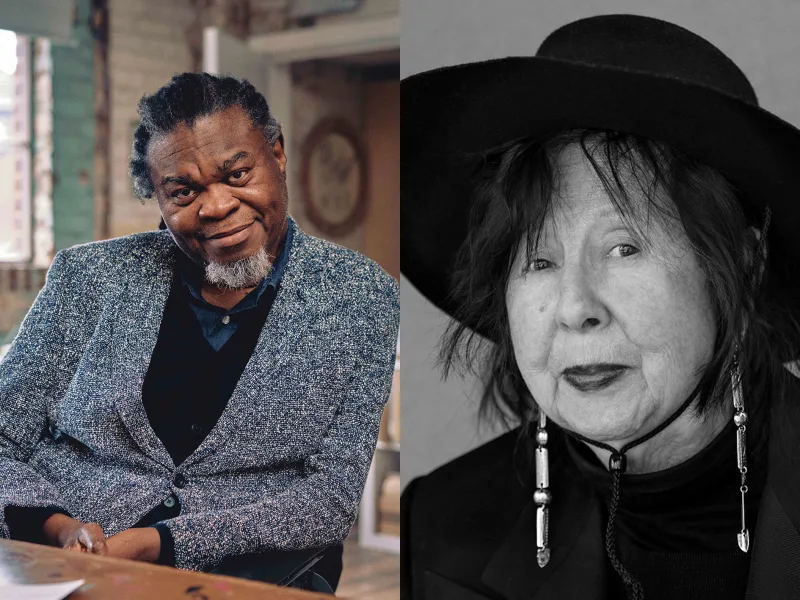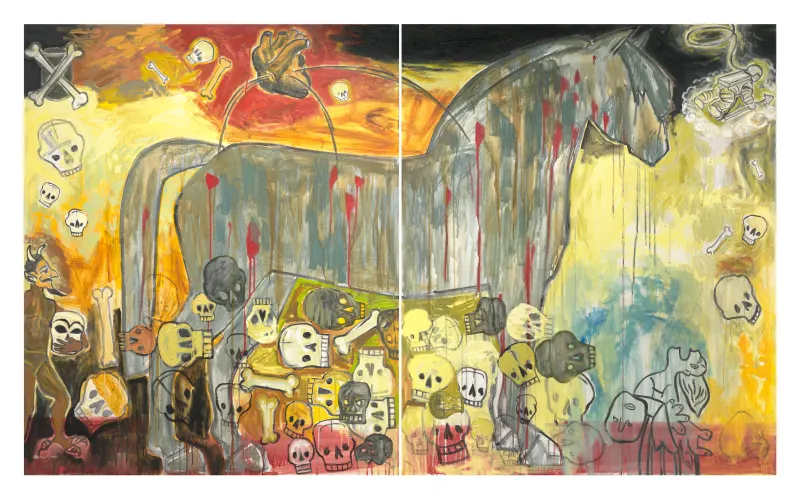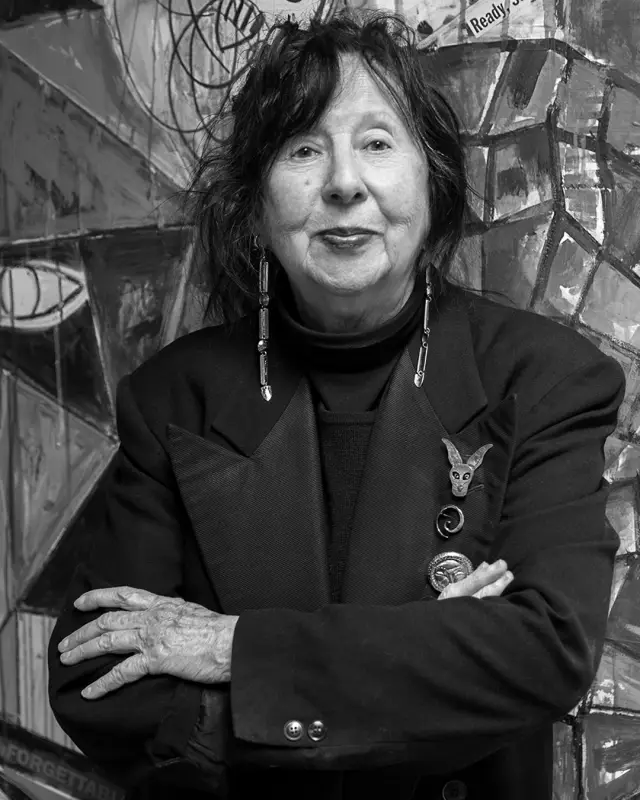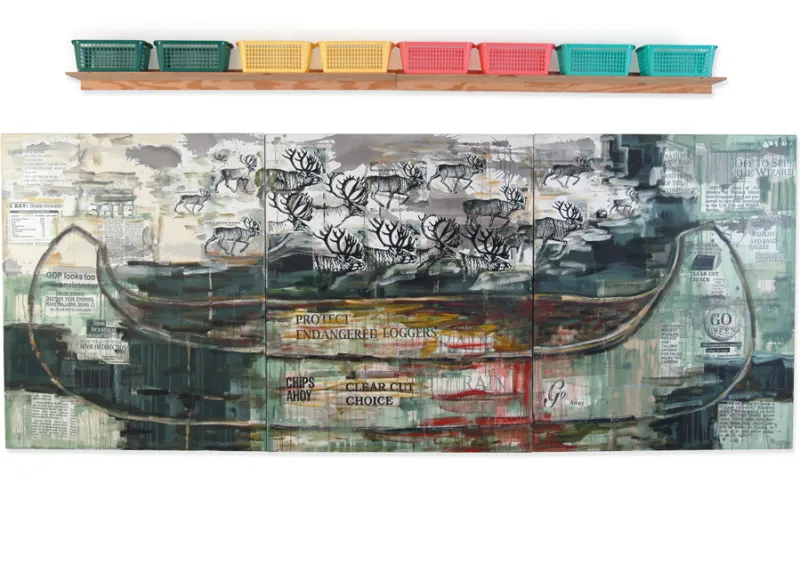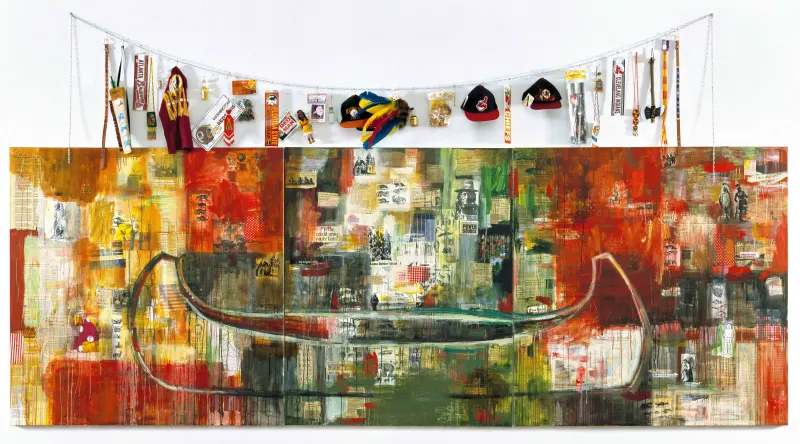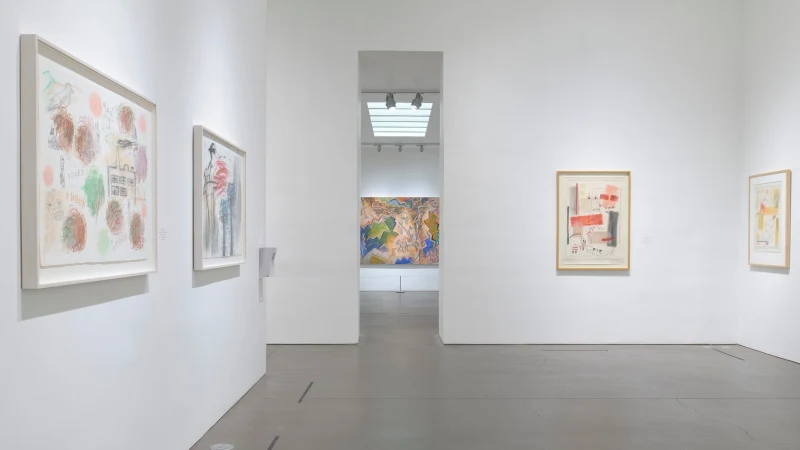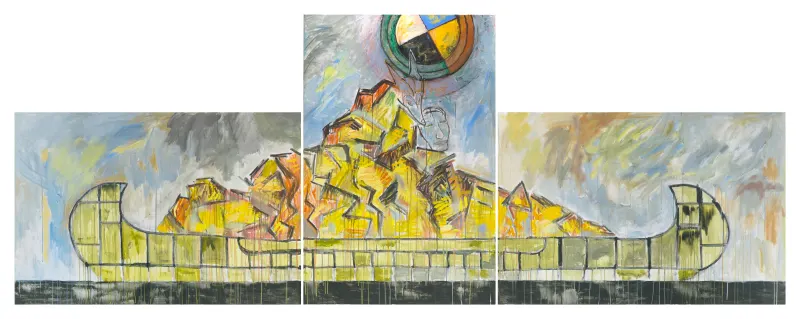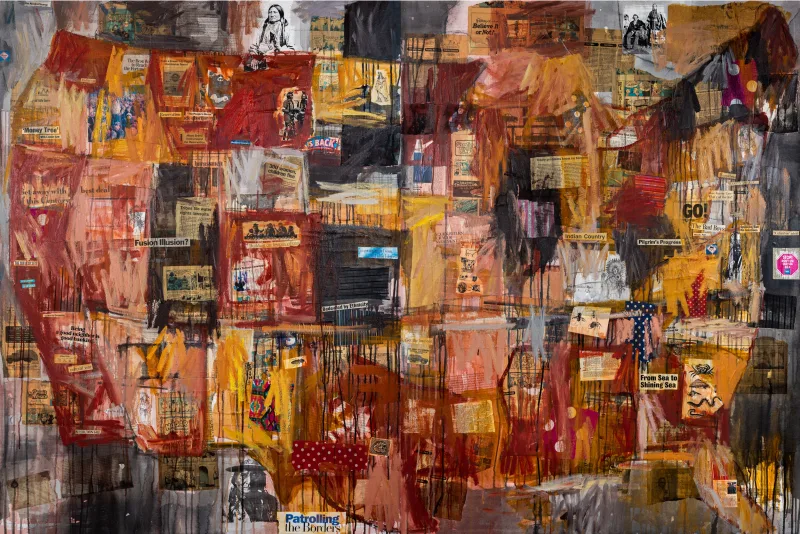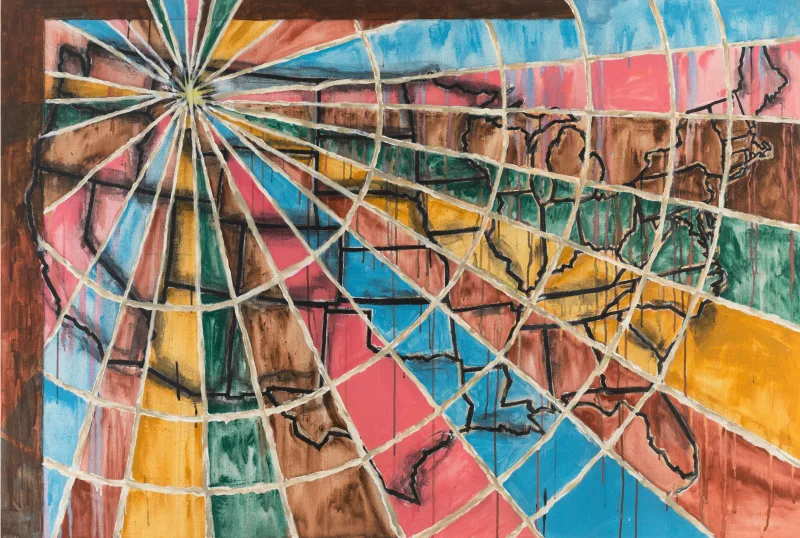
Jaune Quick-to-See Smith
Overview
Over her fifty-year career, Jaune Quick-to-See Smith created drawings, prints, paintings and sculptures challenging America’s systemic injustices towards Native peoples. As well as a pioneering visual artist, Smith was a prominent curator and activist who paved the way for contemporary Native artists.
Over her fifty-year career, Jaune Quick-to-See Smith created drawings, prints, paintings and sculptures challenging America’s systemic injustices towards Native peoples. As well as a pioneering visual artist, Smith was a prominent curator and activist who paved the way for contemporary Native artists.
Born in 1940 on her reservation at the St. Ignatius Indian Mission, Smith was an enrolled Salish member of the Confederated Salish and Kootenai Nation, Montana. She received an Associate of Arts Degree at Olympic College in Bremerton, Washington in 1960, a BA in Art Education from Framingham State College, Massachusetts in 1976, and an MA in Visual Arts from the University of New Mexico in 1980. Smith died in early 2025 following a battle with pancreatic cancer.
Combining appropriated imagery from commercial slogans and signage, art history and personal narratives, Smith’s work fuses a sharp humour with socio-political commentary addressing the oppression of Indigenous cultures. Her abstract landscapes, populated by maps, horses, and canoes, are overlayed with newspaper clippings, found imagery, and corporate logos, to create mixed media works which expose the overlooked history of her ancestors. Her I See Red series began in 1992 as a critical response to the quincentennial celebrations of Christopher Columbus’s invasion, “to remind viewers that Native Americans are still alive”. Later in her career, Smith’s practice developed into sculptures and assemblages such as the Trade Canoe series which foregrounds contemporary concerns of deforestation and climate change.
Smith’s commitment to advocating for Native artists was as integral to her practice as her own art and she worked tirelessly to break what she called the “buckskin ceiling”. She played a pivotal role in curating and promoting exhibitions that amplified Indigenous voices, such as the 1985 touring exhibition Women of Sweetgrass, Cedar, and Sage (organised with Harmony Hammond) and inclusion in Lucy Lippard’s seminal 1990 text Mixed Blessings. Smith was the first Native artist to have a painting acquired by the National Gallery of Art, Washington D.C. (2020), and the first to have a retrospective at the Whitney Museum of American Art, New York (2023).
In June 2025, Stephen Friedman Gallery will open Smith’s first solo exhibition in the UK: a historical survey of paintings and drawings with a room devoted to the paintings that the artist was working on at the time of her death. Garth Greenan Gallery in New York hosted a concurrent solo exhibition of Smith’s work which will include a new large-scale bronze sculpture. In November 2025, Fruitmarket in Edinburgh will open Wilding,the first posthumous exhibition of her work in a public institution.

Selected Artworks





